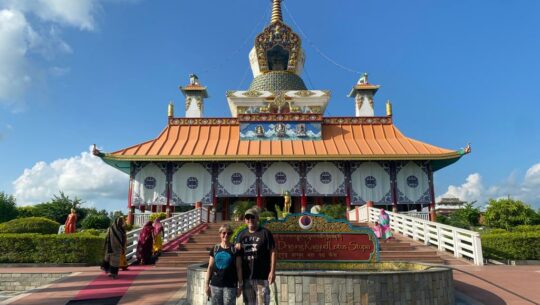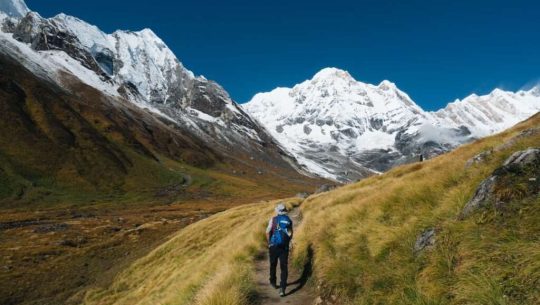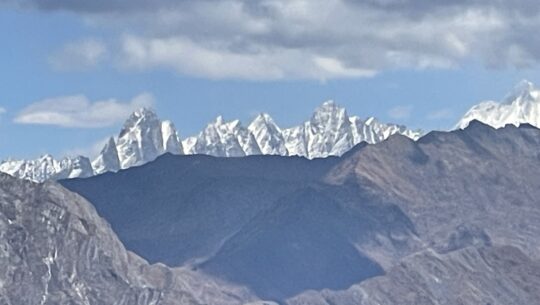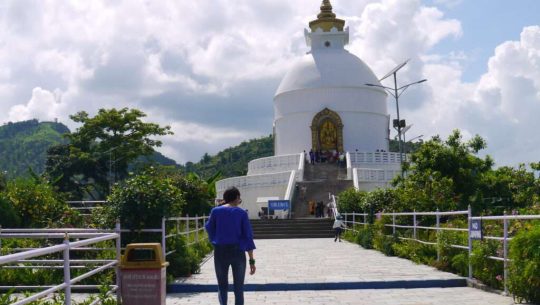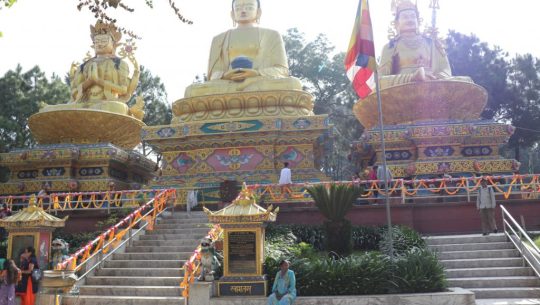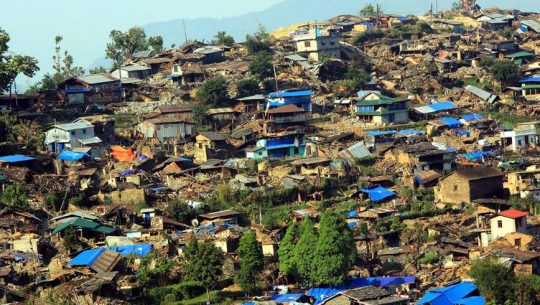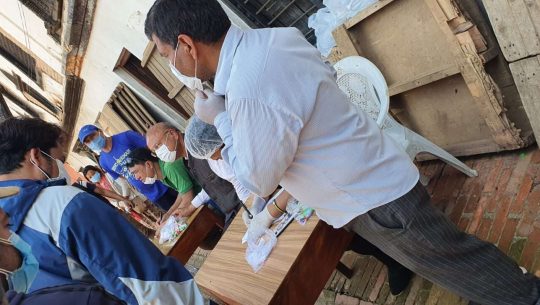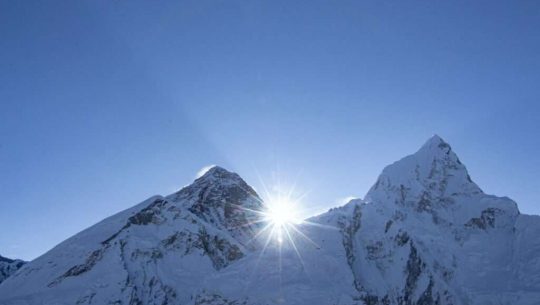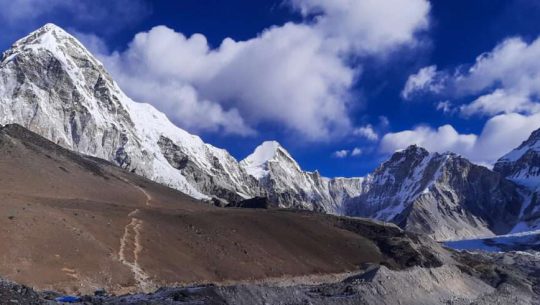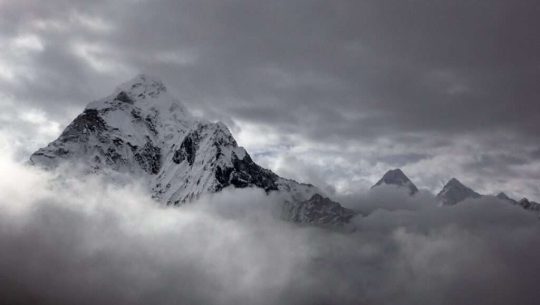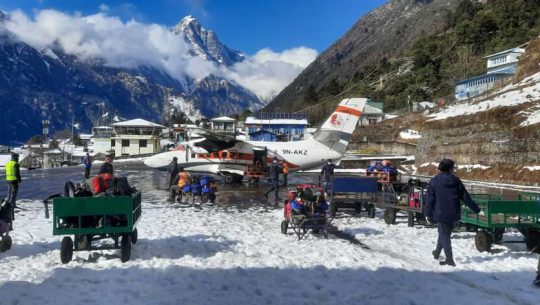Namobuddha/Panauti/Sangha Tour
USD 50
1 Day
Easy
Private Vehicle
2-15
through out the year
Namobuddha/Panauti/Sangha Tour Brief Insight
A Namobuddha, Panauti, and Sangha Tour in Nepal offers a captivating journey through the heart of Nepalese spirituality. Begin your day at Namobuddha, a sacred Buddhist pilgrimage site, where the serenity of the monastery and the panoramic views inspire deep reflection. Then, explore the medieval town of Panauti, known for its charming architecture and historical significance.
Finally, immerse yourself in the vibrant energy of Sangha Day celebrations, connecting with local Buddhist communities and gaining a profound insight into Nepal’s rich religious and cultural heritage. This day tour is a spiritual and cultural odyssey that leaves a lasting impression.
Additional Information
Namo Buddha:
It is situated 40 km from Kathmandu valley the hilltop village of Namo Buddha. The Namo Buddha Day tour takes you to the Buddhist pilgrimage site which is situated at the hilltop of Panauti in the Kavre District. The main attraction of this tour at Namo Buddha is the Thrangu Tashi Yangtse monastery. Young monks studying here are also part of this monastery. Hiking to Namo Buddha is an easy one and ideal for those who strive to walk for at least a few hours. History has it that once a prince named Mahasattva offered himself to a hungry tigress that could not feed several of its cubs. A stone tablet has been there, which is said to mark the place where this historical event took place. A festival is held in this place during November.
Panauti:
Panauti is Situated about 6 km southeast of Banepa, The beautiful village of Panauti is located between Punyemati and Roshi Khola. It is said that the then king Ananda Deva installed four dikapalas (guardian deities) in four directions and founded Panauti by uniting the then scattered small villages with seven hundred people in Kaligat in the year (1006 AD).
The local people believe that the Basuki Naga (serpent deity) has occupied the area of Panauti to protect them from evils and keep them safe. Hence, people are not allowed to use this as the sound might disturb the sleep of the deity. It is also believed that the village itself rests upon one which is why not a single house was broken or dismantled during the great earthquake in 1990 BS (1934 AD). It is also one of the very important trade centers lying next to Banepa as it lies in a small valley surrounded by villages. However, most of the people here are involved in farming.
Panauti was founded by Ananta Malla (1274-1310) AD; others believe that there is a golden scripture dated 1385, which is located within the Indreshwar temple stating that King Harisingh Dev founded the town.
Story legend:
At Trivenighat, the confluence of three rivers, it is believed that the Padmavati River flows secretly, except for the Punyamata and Roshi Rivers. Just like the Saraswati mission river flows in disguise at the confluence of the Ganges and Yamuna rivers in Prayag, India, Roshi in Panauti is considered to be the Rudravati River, the Poonyanamata River is considered to be Lilavati, and the river that flows under Brahmayani temple in disguise is considered to be Padmavati.
As explained in Skandapurana, the creator Parabrahma created the beauty ‘Ahilya’ and entrusted it to Rishi Gautama who could control the ten senses in the form of a nose. When he returned after bathing, he came to know that Ahilya had been deprived of his sattiva by Indra. After the angry sage cursed him to produce the object that he craved the most, thousands of yoni sin marks appeared on Indra’s body. It is said that the sage cursed Ahilya to become a stone after Sattva Haran, and after being in a state of mindlessness like a stone, in the Treta Yuga, the nobleman Ramachandra was born and after touching his feet, Ahilya’s curse was lifted.
Ahilya (Shila) located at the northeast corner of the Indreshwar Mahadev Temple at Panauti is considered the oldest temple with skill after Kasthamandapa of Kathmandu. There is a popular belief that the Makar Mela has been going on continuously ever since Devaraj Indra Panauti, who had a vagina all over his body, became free from sin by doing penance and devotion to ‘Shri Mahadev’ for 12 years.
Moreover
According to another legend, when there was a famine in Patan and Panauti after a great drought, Tantrics from both places came to Phulchoki Mai to pray and ask for water. After the competition to carry water between the two regions, Fulcho’s mother said that she would give a boon to the first to offer silver and gold flowers. As after this, the Tantrik of Patan with gold and silver made those flowers, while the Tantrik of Panauti offered mustard and radish flowers (looking like gold and silver) stating that he did not know Kaligarh.
After 6 years, after making gold and silver flowers and offering them to Fulchoki Mata, the mother sent half of the water to Godavari after telling them that they should also get boons. After this, it is believed that Godavari Mela is held every 12 years and Makar Mela is held every 12/12 years. In the Triveni Sangam of Panauti, where there are religious activities from birth to death, every year in the month of January, the Madhavanarayan deity is brought here in Sankhu and Bhaktapur and kept for two days.
Indreshwar Mahadev Temple
Panauti’s most famous temple is set in a vast courtyard full of statuary in the middle of the isthmus between the two rivers. Topped by a three-story pagoda roof, the temple is a magnificent piece of Newari architecture. The first temple here was founded in 1294 but the shrine was rebuilt in its present form in the 15th century. The lingam enshrined here is said to have been created personally by Shiva.
The woodcarvings on the temple’s windows, doorways, and roof struts are particularly fine, and the erotic carvings here are subtle and romantic rather than pornographic.
To the south of the main temple is the rectangular Unamanta Bhairab Temple, with three faces peering out of the upstairs windows. Located within is a statue of Bhairab, accompanied by goddesses. A small, double-roofed Shiva temple stands in one corner of the courtyard, and a second shrine contains a huge black image of Vishnu as Narayan faces the temple from the west.
Unmatta Bhairava Temple
To the south of the Indreshwar Temple inside the same courtyard is the temple dedicated to Unmatta Bhairava. Now the fierce-looking Bhairava is a deity indigenous to the Kathmandu Valley and predates Hindu and Buddhist infiltration. As Hinduism Inc increased its influence and started acquiring local gods. Thus, Bhairava is now considered a subsidiary/incarnation of Lord Shiva.
Tula Narayan Temple
To the east of the main Indreshwar Mahadev temple, lies the temple of Tula Narayan. It is dedicated to Narayan, the God that sustains the universe. The highlight of this temple is the nine feet tall statue of Narayan carved in smooth black stone. This beautiful statue dates back to 1382 AD when King Jaya Singh Ramavardan is said to have constructed this temple along with performing a Tuladan, an offering of gold to the gods equal to your body weight.
Panauti Museum
At the entrance of the Indreshwar Temple complex, sits the Panauti Museum. The museum is small and has only one room (you’ll need to pay admission to the Indreshwar complex here), but it holds an interesting collection of historical artifacts from the area with woodcarvings, brass, and information about the town’s history. Also, It even explained that ducks are the mascot of the town
Panauti Durbar Square
Panauti Durbar Square is not as prominent as the three Durbar squares of the valley and not very famous but it still is a historical monument of Nepal. There is also the king’s palace in Durbar Square, which is yet to be excavated to a larger extent to reveal more about Panauti. However, there are many artifacts and remnants of the palace such as stone taps, bricks, water wells, and coins.
Bansha Gopal Temple
Bansha Gopal Temple also known as Krishna Temple or Radha Krishna Temple, is situated at Triveni Ghat, the confluence of rivers at the eastern end of the town. This three-storeyed temple is dedicated to Lord Krishna, who among a lot of other good things is most popular for his sixteen thousand girlfriends, eight wives, and one true love.
He is also known for his pranks, one of which is depicted on the wall close to this temple. This prank is called Bastra Haran in which Lord Krishna took the clothes of women who were taking a bath in a nearby river and carried them off to a tree. As the women urged Krishna to give back their clothes, he asked each of them to come out of the river and take their clothes one by one. Not seeing much of an option, each of the women, or Gopis as they are called came out one by one and stood nude in front of Krishna upon which he gave their clothes back.
Again, there are various interpretations of this prank. There is the one that notes that since the Gopis coveted Krishna and wanted to marry him, this was his way of marrying all of these women without actually marrying them, for a woman only stands nude in front of her husband. If that sounded a bit ridiculous, the other interpretation is that this was Krishna’s way of teaching the Gopis not to go into the river naked. Whatever the interpretation, we can be sure that had Krishna pulled off the prank now, it could have landed him in jail.
Brahmayani Temple
Across the river from the Bansha Gopal temple is the temple dedicated to Goddess Brahmayani, one of the Mother Goddesses of the Kathmandu Valley. She is also the presiding goddess of Panauti and during the Panauti Jatra, she gets a private chariot.
As you go inside the temple, you will possibly find that instead of a central deity or a statue, it is just a seemingly random collection of small statues loosely protected. Also, the door to this temple is always kept open. This is the case with all temples dedicated to Mother Goddesses especially those associated with Tantric rituals. As they say, these deities have to be in contact with the natural elements.
Bhadrakali Temple
This temple dedicated to the fierce goddess Bhadrakali is located in the central part of town and isn’t exactly easy to find in the narrow alleys of Panauti. It is situated in a Bahal, or traditional Newari courtyard, right beside regular homes. While its location seems rather homely, Bhadrakali is a deity as important to Panauti as Indreshwar Mahadev, Unmatta Bhairava, and Bhramayani. During the Panauti Jatra, chariots of all four of these deities are pulled, but more on that later.
Pashupati Temple
This Shiva temple in the middle of Panauti is built in the Shikhara style. This style of architecture while present in many places of Kathmandu is historically associated with Dravidian architecture. While Dravidians are currently limited to South India and Sri Lanka, their range presumably used to stretch all the way up north till the Himalayas.
Other Patis, Sattals, and Temples
Patis or Sattals are public resting places and Panauti has quite a few of them. These used to be local hang-out spots that doubled as resting places for pilgrims and merchants visiting Panauti. Some of the more popular ones standing today are Sohrakhutte Pati, Laam Pati, and Ghat Sattal.
In addition to the famous temples mentioned above, Panauti has a lot more. If you are dead set on seeing all of them then here is a list: Jaleshwor Mahadev, Badri Narayan Temple, Dhaneshwor Mahadev Temple, Ram Temple, Kedarnath Temple, Mukteshwor Mahadev Temple, Maneshsori Temple, Gorakhnath Temple, Madhav Narayan Temple, Sankat Narayan Temple, Shitala Mai Temple, Batsaladevi Temple, Matya Narayan Temple, Basuki Naag, Panchamukhi Mahadev, Bhagwati Temple, Kaathganesh Temple, and Dharmadhaatu Mahabihar.
Kailashnath Mahadev:
Inaugurated on the 21st of June 2010, Kailashnath Mahadev in Sangha, on the border of Bhaktapur and Kavre districts, is known to be the tallest Shiva idol in Asia. The Shiva idol itself is said to measure 108 feet high. The number 108 has special significance in Hindu mythology. Furthermore, The Shiva idol can be also seen on the way to Dhulikhel
Our service for our guest
Multi-day Tour
Yoga Tour in Nepal Brief Insight
Yoga physical is a mental and spiritual practice or discipline which originated in ancient Nepal. Yoga is one of the six Astika (orthodox) schools of Hindu philosophical traditions. Yoga Tour in Nepal is a great experience in the Himalayas.
Outline Itinerary
- Day 1: Arrive in Kathmandu or your Destination
- Day 2: Visit Buddhanilkanth, Kapan and Bauddha Nath
- Day 3: Visit Namobuddha, Panauti and Bhaktapur
- Day 4: Visit Chovar, Pharping, Kirtipur and Swyambhu
- Day 5: Drive from Kathmandu to Pokhara and explore
- Day 6: Explore Pokhara then Drive from Pokhara to Kade and hike to Australian Camp
- Day 7: Trek from the Australian camp to Sarankot via Kaski Kot
- Day 8: Sarankot to Pokhara then back to Kathmandu
- Day 9: Final departure
Everest Region
Please go to our Plan Trip or Customize Trip according to your time duration and schedule.
Therefore, Robinson Crusoe Holiday is always ready to provide excellent services for our guests. Based on our cultural motto “Matri Debo Bhaba, Pitrii Debo Bhaba, Atithi Debo Bhaba.” Thus, the Mother is a God, the Father is a God, and the Guest is a God.

